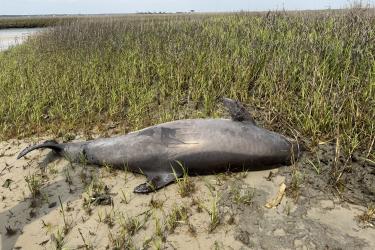What do you do in your position as Regional Aquaculture Coordinator for the Southeast Regional Office?
Andrew: I provide information and expertise to both NOAA staff and external stakeholders on issues related to sustainable marine aquaculture activities in the Southeast. This could include:
- Educating internal staff on marine aquaculture techniques to inform consultation processes
- Acting as the point of contact for regional permitting processes
- Working across federal agencies to create efficiencies and reduce redundancy
- Providing information to stakeholders on aquaculture funding opportunities
The NOAA Fisheries Southeast Region covers eight states and two U.S. territories—a large area for a single coordinator to cover. With the recent addition of Andrew to our team, we can divide and address regional issues and share ideas as new challenges and opportunities arise.
How long have you been in this position, and what is your background?
Andrew: I joined the NOAA Fisheries Southeast Regional Office as a Regional Aquaculture Coordinator in May 2020. Before that I spent eight years working in and with Florida’s aquaculture industry. After earning my Bachelor’s Degree in Aquaculture from the Florida Institute of Technology, I started my career working in commercial and research aquaculture programs. I worked for Mote Marine Laboratory’s Sturgeon Commercial Demonstration Program and the Florida Fish and Wildlife Conservation Commissions’ Stock Enhancement Research Facility. Most recently I served with the Florida Department of Agriculture and Consumer Services, Division of Aquaculture. I was a field office supervisor overseeing the implementation of the division’s Best Management Practices Program across nearly 600 sustainable aquaculture operations. In that role I worked with industry, researchers, state and federal partners, and the public to ensure the sustainable growth of Florida’s aquaculture industry.
What led you to choose a career in marine science?
Andrew: Marine science is a field I’ve been interested in for as long as I can remember. Growing up in coastal southern New Jersey I was surrounded by the marine environment, spending hours fishing and exploring the coastal waters. This is where I first encountered shellfish aquaculture and aquaculture for population enhancement. From then on I was hooked and knew aquaculture was something I wanted to be a part of. I consider myself lucky to be able to work in a field I’m so passionate about and I honestly couldn’t imagine myself doing anything else.
What do you think will be the biggest challenge in the Southeast region in the next few years?
Andrew: We continue to work with our Sea Grant partners to identify opportunities for industry to sell their aquaculture products. We also provide resources for funding and relief efforts designed to aid the aquaculture sector. The next few years will be a joint effort between state and federal agencies to support the U.S. aquaculture industry. W we plan to remain engaged in this effort.
The Executive Order on Promoting American Seafood Competitiveness and Economic Growth was recently released. It has a number of directives for NOAA and other federal agencies over the coming months and years. We are poised to work both internally and with other federal agencies to determine the best way forward to accomplish Executive Order goals in coordination with regional stakeholders.

